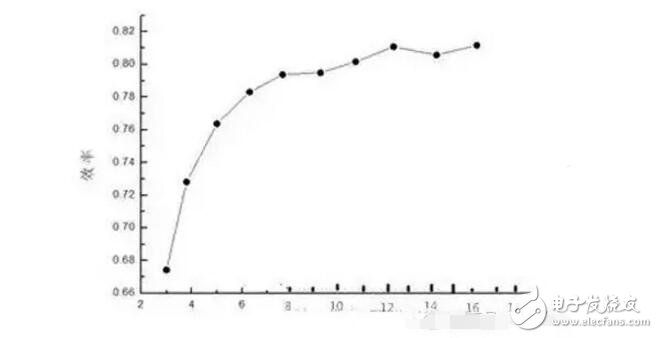Led color temperature is the ratio of changing different light. Increase red light, warmer color temperature, increase blue light, and cool color temperature. Adjust the brightness, change the current flowing through the LED, the current is larger, it will be brighter. On the contrary, it is darker. The regulation of the current is achieved by changing the PWM. The so-called PWM is the pulse width adjustment. The method of pulse width adjustment, the most fundamental is to change the value of the resistance and capacitance value that determines its width. If the product of RC is large, the width will be larger.
The dimming color LED ceiling lamp is actually an internal 2-channel output. All the way is warm light (about 3000k color temperature), all the way is cold light (white, 7000k color temperature). Every road is independent. By giving each channel a different brightness, it is possible to adjust the color temperature and adjust the brightness of the entire lamp. For example, road A is warm light, color temperature is 3000k, but the brightness is only 10% of full brightness, while road B is cold light, brightness is only 40% of full brightness, then the color temperature mixed in the lamp body may be only 5000k (not very Cool white, there is also a little warm white). That is to say, true dimming can be adjusted from brightness and color temperature.
A new method for realizing the color temperature adjustment of LED lampsThe conventional color temperature adjustment method uses two dimming power sources to drive high and low color temperature white LED arrays, and adjusts the color temperature by adjusting the ratio of the driving currents of the two LEDs. This method can only achieve color temperature adjustment, and can not achieve linear dimming. Therefore, based on the analysis of the problems existing in the conventional method of LED color temperature adjustment, this paper proposes a new method of LED color temperature adjustment, which is discussed with everyone. The new method only uses one LED dimming power supply, after the LED dimming power supply. Only adding a few devices can realize the color temperature adjustment and brightness adjustment of the LED lamps without mutual interference, which is beneficial to reducing the cost and improving the reliability of the power supply, and has application value for the control of the LED.
A conventional method, a conventional method of adjusting the color temperature of LED's color temperature adjustment 1.LEDThe LED color temperature adjustable lamp adopts white LED array with high and low color temperature. The two LED arrays are densely arranged alternately to make the two color temperatures fully mixed, and the overall color temperature adjustment can be realized by adjusting the driving current ratio of the two LEDs [3]. Figure 1 shows the block diagram of this method. The PWM1 signal is used to adjust the output current I1 of the dimmable power supply P1, I1 drives the warm white LED array; the PWM2 signal is used to adjust the output current I2 of the dimmable power supply P2, and I2 drives the cool white LED array. The brightness ratio of the warm white LED array and the cool white LED array is adjusted by adjusting the duty ratio of the PWM1 signal and the PWM2 signal, and the overall temperature adjustment of the lamp is achieved due to the sufficient mixing of the two LEDs.

Figure 1: Block diagram of the conventional method system
2. Problems with the conventional method of LED color temperature adjustmentPeople often do not want to change the brightness of the light when the color temperature is adjusted or the color temperature is significantly shifted when dimming, which means that the color temperature and the dimming do not interfere with each other, so that it can be configured by different combinations of dimming and color temperature. More light environment. However, the above scheme is difficult to meet this requirement.
(1) It is difficult to achieve brightness adjustment
In most mature LED dimmable drive power solutions, the power management chip usually only provides one dimming pin. When the color temperature is adjusted by the above conventional method, in order to adjust the ratio of the output current of the dual power supply, the dimming pins of the two power supplies are occupied, so that the hardware resources for independently dimming while adjusting the color temperature are not realized.
(2) The power supply efficiency is too low, which reduces the reliability of the power supply.
Since the LED is a low-voltage direct current source, the LED driving power supply is a step-down type AC-DC constant current power supply, and the efficiency of such a power supply decreases as the power supply power decreases. Figure 2 shows the measured curve of the efficiency of the LED power supply using the Fujitsu MB39C602 chip as a function of input power. When the input power is 3W, the power efficiency is reduced by 17% compared to the input power of 15.5W. In the conventional method of color temperature adjustment, there may always be a power supply with a small input power. This means that the efficiency of the power supply is reduced and the power loss is increased. Power loss is mainly manifested in thermal energy in the power supply and produces a temperature rise above ambient temperature. Experience has shown that for every 10 °C increase in temperature, the probability of system failure is doubled, which will greatly reduce the reliability of the system [4]. On the other hand, an increase in power consumption will result in a reduction in light efficiency and a reduction in the energy saving advantages of LEDs.

Figure 2: Curve of power supply efficiency as a function of output power
Second, the new method of LED color temperature adjustment1.27Mm Pin Header Connector,1.27Mm Dip Curved Plug Connector,1.27Mm Smt Horizontal Connectors,1.27Mm Vertical Type Connector
Shenzhen CGE Electronic Co.,Ltd , https://www.cgeconnector.com